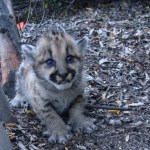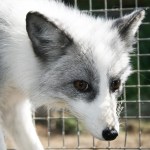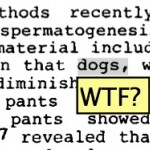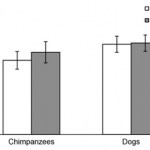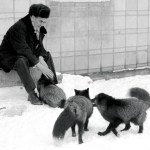mammals
Out on the grassy plains of Kenya's Masai Mara National Reserve, a group of six female topi antelope (Damaliscus lunatus) walk across the savanna. It is the time of the annual rut - a one and a half month period in which most males control small patches of land and try to attract adult females which, for one day, are in estrus. The small group walks by one of the lone males, but just as they reach the edge of his territory he snorts an alarm. It means that somewhere, out ahead of them, a predator waits to pounce on any topi foolish enough to blunder towards it, and so the females stay close…
The skeleton of the Hundsheim rhinoceros, Stephanorhinus hundsheimensis. From Kahlke and Kaiser, 2010.
In any given environment, it might be expected that a generalized or unspecialized species might be less prone to extinction than one which depends upon a narrow temperature range, a peculiar kind of food, or other aspect of natural history which is key to its survival. An herbivorous mammal which can subsist on a variety of grasses, leaves, and other plant foods, for example, may be more likely to survive an ecological disruption than a species tied to foliage which might die back during…
Figure 1: Mountain lion kitten.
From my good friends at LAist:
Since 2002, biologists having been tracking and studying the movements of mountain lions in the Santa Monica Mountains, Simi Hills and Santa Susana Mountains to better understand how they live surrounded by development.
A total of 19 pumas have been tracked during the study, including the three kittens. Currently, nine are being tracked via GPS or VHF, which makes it the largest number of lions being tracked at the same time.
The three kittens are exciting for scientists as the unconfirmed father could be P12 (P stands for Puma,…
Do cats have self recognition? This video suggests they might not, at least in terms of passing the mirror recognition task. But, well, this isn't really the mirror recognition task. And the mirror recognition task may not be the best way to test self recognition in cats.
But in any case, it's a pretty hilarious video of an (evil) cat.
(via @ferrisjabr)
You can have a pet domesticated fox of your very own - from the Russian fox farm I've previously written about - for the low low price of just $5,950.
Figure 1: Isn't he cute? Click to embiggen.
Check it out.
According to the website,
Housing:
Foxes can live outside or inside.They need shade from excessive heat and rain. A bed or blanket is nice, but optional.
If the fox lives outside, the cage should have a bottom or the walls of the cage should be dug in deep enough so that the fox cannot dig a hole and escape.
Inside your house, they will snuggle on a bed like a cat.
During the…
The nearly complete skeleton of a Steller's sea cow (Hydrodamalis gigas) - it is missing bones from the wrist and hand. From Woodward, 1885.
It did not take long for the last remaining population of Steller's sea cow to be driven into extinction. Discovered by the German naturalist Georg Steller around the Bering Sea's Commander Islands in 1741, this enormous and peculiar sirenian became an easy target for Russian hunters. By 1768, it was gone. (The marine mammal would not be scientifically described until 1780, and today it is formally known as Hydrodamalis gigas.) Yet, despite the clear…
The awesome videos just keep on coming. Check out this one from National Geographic.
A juvenile chimp and her mother set out to do some fishing for termites in Congo's Goualougo Triangle, but the juvenile spots something interesting - an apparently not-so-well hidden camera - and investigates. I think it's so fascinating to see how the chimp approaches and investigates a new object. First by visually examining it, then by poking with a stick, and then by feeling it with her hand. Unfortunately, I can't embed it here, so go check it out on the Nat Geo site!
The skeletons of Lucy (left) and Kadanuumuu (right). Both belong to the early human species Australopithecus afarensis. (Images not to scale.)
I never fully appreciated how small Lucy was until I saw her bones for myself. Photographs and restorations of her and her kin within the species Australopithecus afarensis had never really given me a proper sense of scale, and when I looked over her incomplete skeleton - formally known as specimen A.L. 288-1 - I was struck by her diminutive proportions. In life she would have only been about three and a half feet tall. Her physical stature seemed…
Three-dimensional models of hominoid skulls used in the study - (a) Hylobates lar; (b) Pongo pygmaeus; (c) Pan troglodytes; (d) Gorilla gorilla; (e) Australopithecus africanus; (f ) Paranthropus boisei; (g) Homo sapiens. They have been scaled to the same surface area, and the colors denote areas of stress (blue = minimal stress, pink = high stress). From Wroe et al, 2010.
It is all too easy to think of human evolution in linear terms. From our 21st century vantage point we can look back through Deep Time for the first glimmerings of the traits we see in ourselves, and despite what we have…
tags: The Laryngeal Nerve of the Giraffe is Proof of Natural Selection, animals, giraffe, evolution, creationism, intelligent design, dissection, necropsy, autopsy, recurrent laryngeal nerve pathway, vagus nerve, cranial nerve X, evolutionary legacy, Richard Dawkins, streaming video
This video, including comments by Richard Dawkins, documents a necropsy (an autopsy on an animal other than a human) carried out in a classroom on a giraffe. In this video, we follow the pathway of the recurrent (inferior) laryngeal nerve, an important nerve that is a branch of the Vagus nerve (tenth cranial nerve…
Happy Father's Day, everyone!
I spent a lot of time today thinking back to why I started blogging in the first place, while I was at my parents house doing the other-than-science things that I love to do: playing with the dog, cooking, gardening. I realized that I've not done enough of that stuff lately.
I've only been seriously doing the blog thing (in the current format) since January, and I've now been here at Scienceblogs around two months, so it was time to reflect. The transition from Wordpress obscurity to Scienceblogs prominence happened relatively quickly for me, and I think it's a…
Once upon a Thursday night, blog bff Scicurious asked a particular blogger named Jason if he had access to a paper titled, Contraceptive efficacy of polyester-induced azoospermia in normal men. "I certainly hope so," he said. And so he logged in to his university's library proxy website, and searched for the paper.
She said, "PLEASE PLEASE PLEASE tell me you have access to this article" and then "it's about ball sacks I MUST HAVE IT." As it happens, he did have institutional access. So Jason downloaded it. It was a rather large file, so it took a little while for him to upload it to his Gmail…
tags: The Intriguing Sound of Marine Mammals, sounds, songs, communication, language acquisition, noise pollution, shipping, acoustic environment, vocal imprinting, marine mammals, dolphins, whales, Peter Tyack, TEDTalks, TED Talks, streaming video
Bird watchers (especially those who do most of their birding by ear) will particularly enjoy this video: Peter Tyack of Woods Hole talks about a hidden wonder of the sea: underwater sound. Onstage at Mission Blue, he explains the amazing ways whales use sound and song to communicate across hundreds of miles of ocean.
TEDTalks is a daily video…
A golden-mantled ground squirrel (Spermophilus lateralis), photographed in Bryce Canyon National Park, Utah.
A golden-mantled ground squirrel (Spermophilus lateralis), photographed in Bryce Canyon National Park, Utah. Though abundant at the Samwell Cave Popcorn Dome, California site during the Late Pleistocene, its numbers in the area decline at the beginning of the present Holocene epoch.
"One of the penalties of an ecological education", the naturalist Aldo Leopold once wrote, "is that one lives alone in a world of wounds." Few knew this better than he did. Despite becoming a celebrated advocate of wilderness for its own sake during the early twentieth century, Leopold began his career by…
Dogs are particularly good at tasks that involve communicating or cooperating with humans, which has led some researchers to speculate that they are really good at solving social tasks, more generally. For example, dogs can figure out where a human's attention is, are really good at picking up on eye-gaze and finger pointing cues, distinguish among different individual humans (by contrast, humans are really bad at distinguishing among different individual monkeys, for example), and at least in one outstanding case, are capable of "fast mapping."
Relative to non-human primates, domestic dogs…
A drop in the bucket - a massive pile of bison skulls about to be ground into fertilizer, photographed circa 1870. From Wikipedia.
From almost the very start, wolves were not welcome in Yellowstone. When the national park was established by the United States government in 1872 the bison population had crashed - a victim of westward expansion, the fur trade, and the desire to deprive native people of an animal important to their existence - leaving the area's wolves little recourse but to begin preying upon local livestock. This did nothing to help their reputation. Already seen as nature's…
I've decided I want to cover some recent research on social cognition in domesticated dogs. But first, we need some background. So here's a repost from the old blog.
Today I want to tell you about one of my most favorite studies, ever, of animals. Are you ready? It's a FIFTY YEAR LONG longitudinal study of captive silver foxes in Russia. Gather around, pour yourself a cup of your favorite beverage, get comfortable, and enjoy storytime.
In 1948, Soviet scientist Dmitri Belyaev lost his job at the Department of Fur Animal Breeding at the Central Research Laboratory of Fur Breeding in Moscow…
A McDonald's ad from the Netherlands envisions what might have happened if Pleistocene humans had the option of visiting the drive-thru instead of going after fresh mammoth steak.
